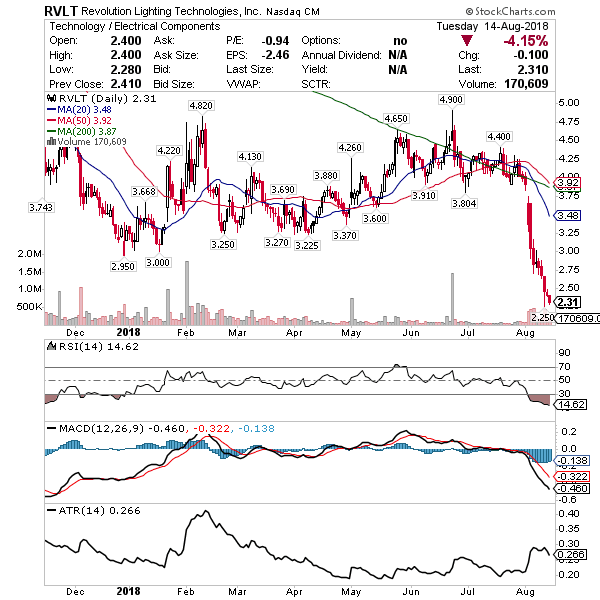Ex-ante demand refers to any demand that doesn’t result in the payment for or exchange of money for goods and services. Ex-post demand, on the other hand, means the actual demand for goods and services that are purchased during a single year within the economy. On one side, you’d have any gains experienced by the ETF while the other side would be populated by daily losses. Because these are the worst 5% of all daily returns, we can say with 95% confidence that the worst daily loss will not exceed 4%.

Having said that, it’s possible to compare expectations versus actuals once the ex-ante analysis’s event passes. The lender assumes that the rate of inflation will be zero, and expects to receive $110 after the expiration of the loan repayment duration. Assuming that the actual interest rate turns out to be 10% (same as the interest rate charged), the real interest rate will be zero rather than the expected 10%. Ex-ante is the prediction of an event before it happens, or before the participants become aware of the event. The prediction may involve individual products of a business, a business unit, or the entire business entity.
How Do You Calculate an Ex-Ante Interest Rate?
Put another way, we expect with 95% confidence that our gain will exceed -4%, ex-post. Ex-ante and Ex-post are Latin terminologies used in predicting the returns of a security. An ex-post analysis also helps to calculate an investment’s market value by subtracting the resulting value from the original value. The investments will be profitable to the investor only when demand for that product increases and consumers start liking the product. Ex-ante analysis with thorough research can help businesses to predict a large variety of outcomes that can either be favorable or unfavorable for them. Alternatively, if the introduction of policy resulted in price hikes in the future, then the policies introduced by the government were not up to the mark.
Ex-ante interest rate is the real interest rate that is calculated before the actual rate of inflation is known. It is the interest rate quoted on loans and bonds, and it does not adjust for the rate of inflation. For example, if a bank lends you $100 at an interest rate of 10%, you can expect to pay $10 as interest without adjusting for the inflation rate. The historical method for computing VaR simply re-organizes actual historical returns by ranking the order from worst to best. As a historical example, consider the Invesco QQQ ETF (QQQ), which began trading in March 1999. If we calculate each daily return, we produce a rich data set that can be arranged in order from the best daily return to the worst.
It involves forecasting and predicting before the occurrence of an event. As a result, market participants are unaware of the event and its relevant information; the actual outcome is still unknown. It refers to the actual level of investment during a particular period of time. It refers to the planned or intended investment during a particular period of time. Sometimes the sequence of events is important for establishing rights and obligations, and sometimes it is not. For example, if a nuisance was there before the neighbouring residences arrived, the nuisance is sometimes allowed to continue in the same location under the doctrine of coming to the nuisance.
What is the Difference Between Ex Ante Investment and Ex Post Investment? – Economics
Such events may include earnings reports, share price movements, industry dominance, etc. Ex-ante risks are future risks that are not based on actual data while ex-post risks take actual returns into account. Keep in mind, though, that ex-post risk doesn’t take into account any shocks or drastic changes, whether they pertain to surprising market upsets or gains. So if there’s an economic event that occurs, it could sway the way the investment performs. Similarly, a change in market conditions (say, a big rally) could push stocks up, changing the returns for a mutual fund. An analyst executes a regression of the portfolio’s yields versus the returns of the market index to determine how much of a portfolio’s profit and loss might be the result of market exposure.
- It is making a prediction that the economy is growing fast enough to justify a rate rise.
- Analysts use fundamental factors to determine the expected returns and then compares them to the actual performance of the security.
- On one side, you’d have any gains experienced by the ETF while the other side would be populated by daily losses.
- For example, for a March 31 quarterly report, the actual return measures how much an investor’s portfolio has increased in percentage from Jan. 1 to March 31.
Analysts use fundamental factors to determine the expected returns and then compares them to the actual performance of the security. However, ex-ante is not always accurate because the prediction does not account for unexpected variables, and the market is susceptible to shocks that alter the returns of a security. Ex-post savings and ex-post investment are always equal at any level of income. The distinction between ex-ante and ex-post is significant because all variables in the theory of income determination are ex-ante (planned) variables. The difference between the two outcomes may reveal additional information about how to improve the prediction process and make it more accurate.
Create a free account to unlock this Template
As such, any risks that an investor or other individual may experience in the future can be determined using statistical measurements based on the investment’s long-term returns. On the other hand, ex-post means “after the event,” while ex-ante means “before the event.” Ex-post is backward-looking, and it looks at results after they have already occurred. For investment companies, analysts can use historical returns to forecast the probability of making a profit or loss on an investment.
Gisele Bündchen Doubles Up Her Denim, as $300,000,000 Ex-Husband Tom Brady Joins Shelby Companies Limited’s Birmingham Move – EssentiallySports
Gisele Bündchen Doubles Up Her Denim, as $300,000,000 Ex-Husband Tom Brady Joins Shelby Companies Limited’s Birmingham Move.
Posted: Sat, 05 Aug 2023 12:13:00 GMT [source]
The future value of an asset can be predicted by checking the past performance of that asset and keeping external variables in mind. It also helps to know whether the value of an asset has increased over time or not. An investor, based on purchasing trends, demand and supply, and news, might predict whether the financial security in which they have recently invested will give them a higher return or not. These analyses are used in fields like predicting investment returns or company earnings.
Random Glossary term
The predictions are related to the cost savings that will result from the merger, as well as the possible synergies that the combined entity will enjoy after the merger transaction is completed. Ex-post is best used for periods less than a year and measures the yield earned for an investment year to date. For example, for a March 31 quarterly report, the actual return measures how much an investor’s portfolio has increased in percentage from Jan. 1 to March 31. Predicted outcomes (ex-ante) can be compared with actual outcomes (ex-post) to check the accuracy of an analyst’s predicted results. The ex-ante analysis is essential, as it can help an investor check an investment’s viability. In addition, forecasted returns can be used as a benchmark for whether to invest in a particular security or not.
It is making a prediction that the economy is growing fast enough to justify a rate rise. Investors, advisers, and analysts can use ex-post analyses to calculate the largest scope of losses possible. This, of course, doesn’t take into account any future market swings, abnormalities, or other unexpected events that may take place.
Here are a couple of examples to demonstrate the meaning of ex-ante in the financial world. The first one examines how it works with gambling through a simple coin toss. Take your learning and productivity to the next level with our Premium Templates. difference between ex ante and ex post investment Access and download collection of free Templates to help power your productivity and performance. Manu Lakshmanan is a member of WSO Editorial Board which helps ensure the accuracy of content across top articles on Wall Street Oasis.
Government expenditure changes are a key component of fiscal policy intended to keep the macroeconomic business cycle stable. The ex-post value of an asset can be calculated by taking the opening and closing value of an asset for a specific period. The opening value is taken as a market value at that point in time or the amount paid by investors for purchasing the asset. Even if the US economy is still doing well in one or two years time, with strong growth – this would suggest that the decision to raise interest rates was justified.

They can determine this using ex-ante analysis conducted by financial professionals. These experts break down and compare revenue streams and determine how compatible they are with one another. They can also use forecasting to determine if the merger will result in savings if a new company is formed by conducting a cost-benefit analysis. Ex-post is another word for actual returns and is Latin for after the fact.
The regression provides the portfolio’s beta to the market index and the amount of alpha the fund was gaining or losing in relation to the market index. Ex-post information is attained by companies to forecast future earnings. Ex-post information is utilized in studies such as value at risk (VaR), a probability study that approximates the maximum amount of loss an investment portfolio may incur on any day. VaR is defined for a specified investment portfolio, probability, and time horizon. Planned investment is a component of government spending that aids in the expansion of the economy’s productive capacity, and it is similar in the case of a business firms’ investment. Outlays for other areas, such as rural development and education, are included.
On the other hand, closing value is taken as the current market price or the price investors are willing to pay for acquiring that asset. This method presents the actual outcomes of the company based on historical data. This data allows investors to obtain a security’s actual performance without considering expectations and estimates (external factors can impact that). Past performance of returns earned by security is observed, and outcomes are predicted. The expected result is a benchmark for comparing the predictions with the actual outcomes.
- It involves the analysis of actual historic return streams to ascertain the variability of that return stream over time.
- The prediction can happen before the merger happens or immediately after the merger happens, but there is uncertainty about the possible effects of the transaction.
- But if you judged by the information available to you after the coin was flipped and you had lost, you should expect a possible loss of $1 on an ex-post basis.
- After researching it, analysts develop a theory or conclusion based on the information presented.
As a final example, priority in bankruptcy gives the right to the first creditor of the same secured debt, but not to the first creditor of unsecured debt. This article presents an efficiency-based framework for answering these questions. Ex-post risk is often used in value at risk (VaR) analysis, which is a tool used to give investors the best estimate of the potential loss they could expect to incur on any given trading day. Ex-post analysis is the traditional approach of performance analysis for long-only funds.
